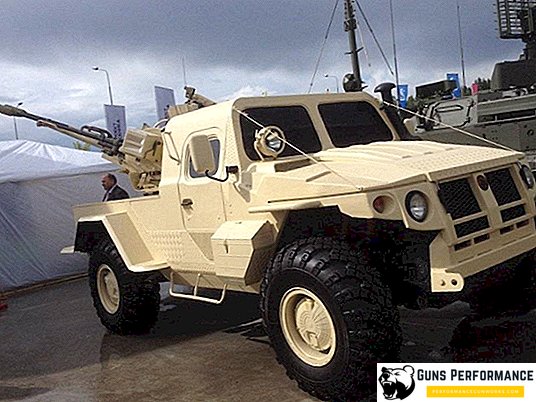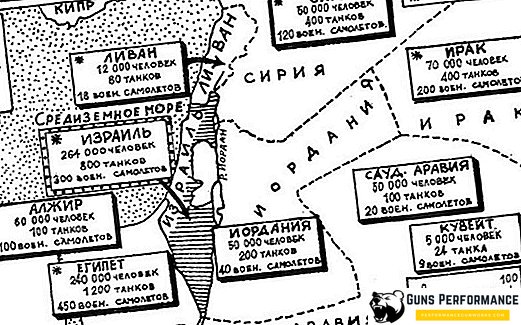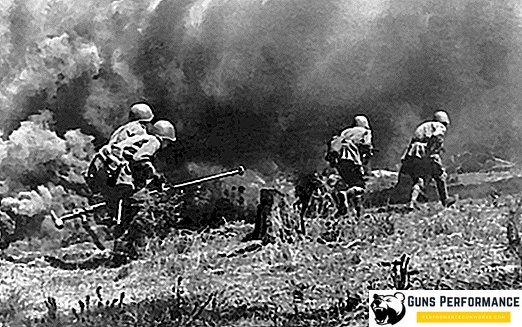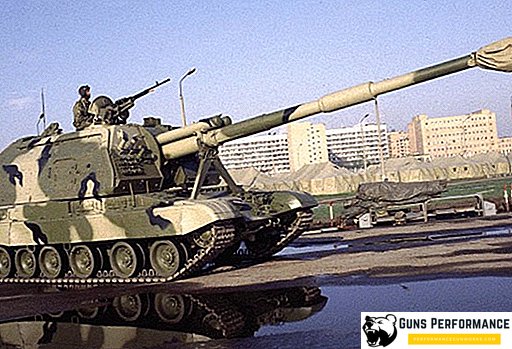An interview with military expert Alexander Shatov with the head of the radio engineering troops of the Russian Armed Forces Russian Armed Forces, Major General Andrei Yakovlevich Koban, as well as with a Russian military scientist, Deputy General Director of ZAO NIC RESONANCE, a full member of the Academy of Military Sciences Alexander Vasilievich Shcherbinko authoritative experts on the prospects for the development of radar.
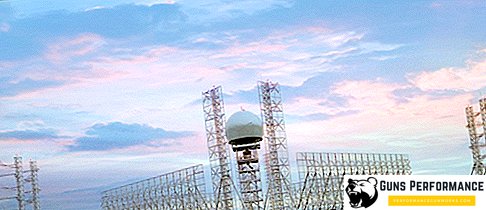
A.Sh. - Andrei Yakovlevich, what trends in the development of modern radar systems are we currently seeing?
A.K. - The development of modern radio-electronic equipment is primarily due to the improvement of the means of an aerospace attack (SVKN) of a potential enemy, which have now become the main means of waging a modern large-scale war. At the same time, the improvement of the technological base made it possible to create means of protection against SVKN, commensurate with existing and prospective threats. According to foreign analysts, the most promising SVKN will be hypersonic cruise missiles, aerospace planes, reusable unmanned aerial vehicles, which plan warheads. And in SVKN apply new technologies, reducing radar visibility.

Aviation, missile and space weapons of warfare today form the basis of modern naval forces and ground forces. This led to the fact that the coverage of the air, and in recent decades - the aerospace sphere has become an indispensable attribute of modern all-arms combat. The struggle for supremacy in the air is firmly included in the category of the highest priorities of armed confrontation. According to expert estimates, the leading states of the world spend up to 50-60% of their military budgets on the development of means of aerospace attack and aerospace defense. A gradual shift of the center of warfare into the aerospace sphere began. Accordingly, fundamental changes in the nature of the armed struggle in wars and armed conflicts of the beginning of the XXI century. also lead to fundamental changes in the basic tenets of military strategy and operational art.
A.Sh. - In recent years, such a concept as convergent technologies, which include the NBICS (nano-, bio-, info-, cognitive and socio-humanitarian) sciences and technologies, has become frequently used. Considering that the “Resonance-N” radar complex, produced with the leading role of your enterprise, is called cognitive, it is completely natural to find out from you what it is - cognitive technologies?

A.SH. - The Latin cognito root consists of parts "co-" ("together") + "gnoscere" ("I know"), which gave the name to a new scientific direction. Over time, cognitive science has emerged as an area of interdisciplinary research of knowledge, understood as a set of processes for the acquisition, transformation and use of knowledge by living and artificial systems.
A.Sh. - In the conditions of constantly growing shortage of time for making decisions when repelling attacks using SVKN, the question of introducing maximum automation of troop and weapon control systems and developing information support and methods of fire (shock) destruction of the enemy is completely logical. New challenges generate new needs. According to a number of Russian military specialists, at present, the general direction of work on the formation of a modern aerospace defense of the country provides for the creation and development of information and fire facilities with their mandatory interconnection through a single system of command and control and communications. Andrei Yakovlevich, your opinion?
A.K. - Application of the achievements of modern technologies in the control and communication systems, automated systems, satellite communications, radars, the use of high-speed computers and artificial intelligence systems leads to revolutionary changes in views on the conduct of hostilities in the aerospace field. Under the influence of new types of SVKN, the quantitative and qualitative, temporal and spatial parameters of the radar reconnaissance system (HRD) are changing. At the present stage, an integrated use of the forces and means of HRD of various types and departments in the performance of peace and wartime tasks is required.
Information technologies used in the HRD system are developing intensively, especially during the last I5-20 years. The widespread use of digital methods of forming and processing signals, the use of integrated and functional electronics, hybrid integrated circuits, solid-state microwave devices can significantly expand the capabilities of electronic equipment, increase the amount of processed and used information and the variety of tasks, and most importantly - reduce the time for passing and receiving information in some cases, with the solution of problems of ACS. Recently, adaptive radars have been developed and are being used, which can adapt to the external jamming and target environment, to the propagation conditions of radio waves, and increase the detection range of a SVKN of a potential enemy by an order of magnitude. In addition, the new generation of radar stations in solving practical problems in the aerospace defense system will solve problems and develop decision-making algorithms even in the conditions of insufficient information about the air object, thereby providing support to the command in conditions of limited decision-making time. The use of fire means for airborne targets will already occur without additional intervention by the authorities with this automated algorithm for the operation of the aerospace defense system. Our military-industrial complex creates and equips troops with modern radio-electronic equipment (RET). The implementation of the import substitution program gave impetus to the rapid development of domestic electronic components, which, accordingly, allows us to improve the tactical, technical and operational characteristics of PET. The widespread use of modern computational tools in PET - single-board machines of the 7th generation with multi-core processors allows the use of new algorithms for processing complex radar signals, including using velvet transformations. In addition, an extensive network of self-diagnostics, covering all the systems of electronic therapy, allows you to quickly manage and redistribute reserves, which greatly increases its survivability.
Modern radar stations, such as “Sky”, “Podlet”, “Sopka”, “Volga”, “Air Defense Update”, “Resonance-N”, are being supplied to the troops. All these radars are 4-5 generation and allow you to successfully solve The tasks assigned to the radio engineering troops of the VKS. In 2017, radio engineering divisions will receive more than 70 modern advanced radar stations and complexes.
So, in modern conditions, in order to win or just survive, we need to possess not only nuclear weapons, but also convergent technologies.
A.Sh. - So, we are back to the cognitive systems, to smart machines, capable of somehow replacing the reasonable actions of man. The media has long been such names as "Smart Antenna" ("Smart Antenna"), "Cognitive Radio", "Cognitive Radar"; Alexander Vasilyevich, so what is all the same difference cognitive radar from adaptive radar, the development of which began back in the 1970s?
A.SH. - The names of the type "Smart Antenna" - "Smart Antenna", "Cognitive Radio", "Cognitive Radar" reflect a certain degree of "artificial intelligence" embedded in the systems by programmers. For example, according to the official definition of the ITU-R WPiB, the Cognitive Radio System (CRS) is a radio system that takes into account information about the surrounding working and geographical environments, the established rules and its internal state. In accordance with this information, the system dynamically autonomously adjusts the operating parameters and transmission protocols in order to achieve the goal and at the same time learn from the experience gained.
Answering another question, we note that work on the creation of adaptive radar stations really began in the USSR in the 1970s. In the adaptive antennas of the far radar, a method was used to automatically search for channels free from interference in order to escape from the frequency “clogged” with noise to a new one; in addition, an adaptation was made according to the type of signal and the automatic gain control (selection of the "correct" gain factors). In the over-the-horizon radar special algorithms regulated the optimal ratio between the signal and interference, so that the signal was maximum, and the noise - minimal. Such adaptability is just one of the signs of cognitiveness.
The United States, creating expensive weapons, such as the F-35 fighter, suddenly concluded that in the event of war with Russia, with the current state of affairs, the F-35 will not have a chance to overcome the Russian air defense system.
The way out of the situation, US military experts see the development of self-learning systems with elements of artificial intelligence, called cognitive, that approach living beings in the way they operate and speed. An example for them is the bat, which is oriented in space with the help of echolocation, moving at the same time rather quickly. Man has not yet created anything close to perfection.
What can be said about the state of affairs with cognitive radars? While Americans are engaged in purely conceptual development. BAE Systems employs 200 specialists in machine learning, physics, statistical signal processing and computational neuroscience, etc. Of course, they do not get tired to advertise their concept, as if it is about to appear in the form of a working prototype.

Cognitive radar (KR) ideally is an autonomous intelligent radar system capable of solving problems traditionally considered creative, belonging to a particular subject area, knowledge of which is stored in the memory of such a system. The structure of the intellectual system includes three main blocks - a knowledge base, a solver and an intelligent interface that allows you to communicate with a computer without special programs for data entry, that is, the system must create programs for solving problems of a certain complexity class and solve these problems during self-study. An important component of the intellectual system is the knowledge base (KB). The system must be able to derive new knowledge from the old, to find patterns in the KB, and the knowledge base differs from the database (DB) precisely by the presence of an output mechanism. In the KR system, the presence of feedback and the ability of the system to self-correct, self-learning during operation based on the results obtained are required. Another sign of cognition is the ability to predict, to anticipate, a kind of anticipation of events.


